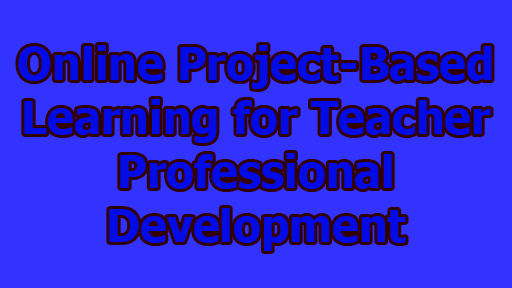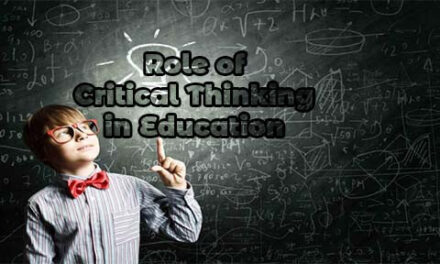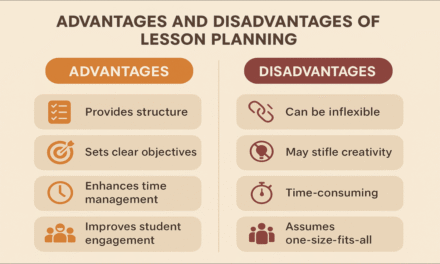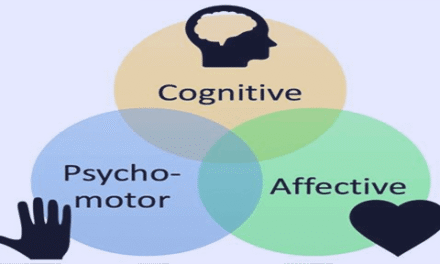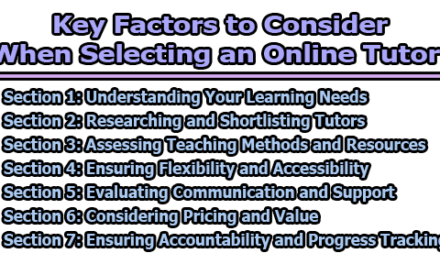Online Project-Based Learning for Teacher Professional Development:
In the ever-evolving landscape of education, providing effective professional development opportunities for teachers is paramount to ensuring high-quality instruction and student success. Project-Based Learning (PBL) is a pedagogical approach rooted in constructivist principles that foster active engagement, critical thinking, and collaboration among students. When integrated into teacher professional development, PBL offers a transformative and empowering experience for educators, equipping them with the skills and knowledge to create dynamic learning environments that inspire and empower their students. This article delves into the world of online Project-Based Learning for teacher professional development, exploring the key principles, benefits, challenges, and successful strategies for implementation.
1. Understanding Project-Based Learning: Principles and Benefits:
1.1 Principles of Project-Based Learning:
Project-Based Learning (PBL) is an innovative educational approach that is deeply rooted in constructivist principles. According to Cocco (2006), PBL is based on three constructivist principles: Learning is context-specific, learners are involved actively in the learning process, and students learn through social interactions and the sharing of knowledge. These principles guide the design and implementation of PBL, making it a powerful and effective learning strategy for students of all ages. Let’s delve into each constructivist principle and explore how they shape the PBL experience:
1.1.1 Learning is context-specific:
The first constructivist principle emphasizes that learning is most effective when it occurs within a meaningful and relevant context. In traditional education, students often encounter disconnected pieces of information that may not seem applicable to their lives. This can lead to disengagement and a lack of understanding.
PBL, on the other hand, addresses this issue by anchoring learning in real-world contexts and authentic problems. Students are presented with challenging and complex tasks that mirror situations they might encounter in the real world. These tasks require them to apply their knowledge and skills in practical ways. By connecting learning to meaningful contexts, PBL motivates students to engage deeply with the subject matter, fostering a sense of purpose and relevance in their education.
1.1.2 Learners are involved actively in the learning process:
The second constructivist principle highlights the importance of active student involvement in the learning process. In traditional lecture-based classrooms, students often play a passive role as information recipients. This passive learning approach may lead to superficial understanding and limited retention of knowledge.
PBL addresses this issue by placing students at the center of the learning experience. In a PBL environment, students become active participants in their education. They take on the role of investigators, researchers, and problem-solvers, driving their learning journey. Through active involvement, students construct their understanding of concepts, make connections, and develop critical thinking skills. They become more invested in their learning as they take ownership of the process, resulting in deeper and more meaningful learning outcomes.
1.1.3 Students learn through social interactions and the sharing of knowledge:
The third constructivist principle emphasizes the social nature of learning. Humans are inherently social beings, and interaction with others plays a crucial role in the learning process. In traditional settings, learning is often solitary, with limited opportunities for peer interaction and collaboration.
In contrast, PBL actively promotes social interactions and collaborative learning. When students engage in PBL, they work together in teams or groups to tackle complex problems and projects. Through these collaborative experiences, they share their diverse perspectives, ideas, and insights. Collaborative learning fosters a supportive and inclusive learning environment where students learn from each other’s experiences and knowledge.
Additionally, PBL encourages students to present their findings and solutions to an authentic audience, such as their peers, teachers, or even professionals in the field. This sharing of knowledge allows students to refine their understanding and communication skills while receiving feedback from others. As a result, students develop effective communication and presentation skills, essential for success in the real world.
1.2 Benefits of Project-Based Learning for Students:
Project-Based Learning (PBL) offers a wide range of benefits for students, making it a highly effective and engaging educational approach. By immersing students in authentic, real-world projects, PBL goes beyond traditional classroom learning and empowers students to become active learners, critical thinkers, and problem solvers. Let’s explore the various benefits of PBL in detail:
1.2.1 Active Engagement:
One of the most significant benefits of PBL is that it actively engages students in their learning. Instead of passively absorbing information, students are immersed in hands-on projects that require them to apply their knowledge and skills. This active involvement fosters a sense of ownership and responsibility for their learning journey, leading to increased motivation and enthusiasm.
1.2.2 Meaningful Learning:
PBL connects learning to real-world contexts, making it more meaningful and relevant for students. When students work on projects that mirror actual challenges, they understand the practical applications of their learning. This sense of relevance enhances students’ understanding and retention of knowledge, as they can see how the concepts they learn are applicable in their lives.
1.2.3 Critical Thinking Skills:
PBL encourages students to think critically and analytically. As they grapple with complex problems and projects, students must evaluate information, make decisions, and solve problems collaboratively. This process hones their critical thinking skills, enabling them to approach challenges with creativity and resourcefulness.
1.2.4 Collaboration and Communication:
In PBL, students often work in teams or groups to complete projects. This collaborative learning environment fosters teamwork, communication, and interpersonal skills. Students learn to effectively communicate their ideas, listen to others’ perspectives, and work collaboratively towards shared goals, mirroring real-world professional settings.
1.2.5 Autonomy and Independence:
PBL provides students with autonomy and independence in their learning. They have the freedom to explore topics of interest, make decisions about project design, and take ownership of their learning process. This autonomy not only boosts students’ confidence but also nurtures a sense of responsibility for their learning outcomes.
1.2.6 Problem-Solving Abilities:
PBL exposes students to authentic problems that require innovative solutions. By engaging in the problem-solving process, students develop their ability to analyze issues, generate ideas, and implement solutions. These problem-solving abilities are valuable skills that prepare students to face challenges in various aspects of life.
1.2.7 Interdisciplinary Learning:
PBL naturally integrates different subject areas, promoting interdisciplinary learning. Projects often require students to draw knowledge from various disciplines to address complex issues comprehensively. This interdisciplinary approach fosters a holistic understanding of concepts and encourages students to see the interconnectedness of knowledge.
1.2.8 Long-term Knowledge Retention:
Studies have shown that PBL leads to long-term knowledge retention. When students learn in a meaningful context and apply their knowledge to solve real problems, they are more likely to remember and internalize the information. This long-term retention is essential for continuous learning and skill application.
1.2.9 Intrinsic Motivation:
PBL taps into students’ intrinsic motivation to learn. By allowing them to pursue their interests and work on projects that matter to them, students are naturally motivated to invest time and effort in their learning. This intrinsic motivation leads to a more positive learning experience and a deeper commitment to the educational process.
1.2.10 Preparation for the Future:
PBL equips students with the skills and competencies needed for success in the 21st century. The ability to collaborate, think critically, solve problems, and communicate effectively are highly sought-after skills in the modern workforce. PBL prepares students to navigate an ever-changing world and thrive in diverse professional environments.
2. Challenges in Implementing Project-Based Learning:
Implementing Project-Based Learning (PBL) can be a transformative and rewarding educational experience, but it also comes with its share of challenges. Educators and schools may encounter various obstacles during the adoption and execution of PBL in the classroom. Understanding and addressing these challenges is crucial to ensuring successful PBL implementation. Let’s explore the key challenges:
2.1 Curriculum Alignment:
One of the primary challenges in implementing PBL is aligning project-based activities with the required curriculum standards. Educators need to strike a balance between providing meaningful, authentic projects and ensuring that learning objectives and standards are met. Finding the right projects that align with curricular goals can be a complex process and requires careful planning and collaboration among teachers and curriculum designers.
2.2 Time Management:
PBL projects often require an extended period for students to research, plan, and complete their work. This can be a challenge within the constraints of a fixed academic schedule. Teachers need to allocate sufficient time for PBL without sacrificing the coverage of essential content. Additionally, managing time within the project itself is crucial to ensure that students stay on track and complete their work within the allotted timeframe.
2.3 Classroom Management:
PBL shifts the traditional classroom dynamic, with students taking on more active roles in their learning. This change may pose challenges in classroom management, as students engage in group work, self-directed learning, and collaborative activities. Teachers must establish clear expectations, guidelines, and routines to support a productive and focused learning environment.
2.4 Assessment Methods:
Assessing student learning in PBL can be more complex than traditional methods. Standardized tests may not adequately capture the depth of learning and problem-solving skills developed through PBL. Educators need to design authentic and varied assessment methods, such as rubrics, presentations, portfolios, and demonstrations, to effectively evaluate students’ understanding and mastery of content and skills.
2.5 Teacher Preparedness:
Successfully implementing PBL requires a shift in the role of teachers from traditional instructors to facilitators and guides. Some educators may feel unprepared or unsure about their new role in the PBL classroom. Professional development and ongoing support are essential to equip teachers with the necessary skills and confidence to effectively implement PBL strategies.
2.6 Access to Resources:
PBL often involves real-world problem-solving and hands-on projects, which may require additional resources and materials beyond traditional textbooks. Ensuring equitable access to technology, materials, and community resources for all students can be a challenge, especially in schools with limited funding.
2.7 Student Engagement:
While PBL is designed to enhance student engagement, not all students may immediately embrace this approach. Some students may struggle with the freedom and autonomy provided by PBL and require additional support to become actively engaged in the learning process. Differentiation and personalized learning strategies can help address individual student needs and preferences.
2.8 Assessment of Collaboration Skills:
Collaboration is a key component of PBL, but assessing individual students’ collaboration skills can be challenging. It may be difficult to determine each student’s level of contribution to group projects. Implementing strategies to assess and provide feedback on collaboration skills is essential to ensure that students develop these vital 21st-century skills.
2.9 Parent and Community Understanding:
Introducing PBL may be a new concept for parents and the broader community. Some stakeholders may have concerns about the effectiveness or rigor of project-based learning compared to more traditional approaches. Educators need to communicate the benefits of PBL, involve parents in the learning process, and address any misconceptions or concerns.
2.10 Assessment of Learning Outcomes:
PBL focuses on authentic, real-world problem-solving, which may not always result in a straightforward right or wrong answer. As a result, assessing learning outcomes can be more subjective and open to interpretation. Educators must develop clear criteria and rubrics to evaluate students’ performance and understanding in a fair and consistent manner.
3. The Role of Professional Development in PBL Implementation:
Professional Development (PD) plays a crucial role in the successful implementation of Project-Based Learning (PBL) in educational settings. PBL requires a shift in teaching practices and a new approach to classroom dynamics, making it essential for educators to receive training and support to effectively integrate PBL into their instructional strategies. Let’s explore the role of professional development in PBL implementation:
3.1 Developing a Shared Understanding:
Effective PD provides educators with a shared understanding of the principles and pedagogy of PBL. It ensures that all teachers are on the same page regarding the goals, benefits, and instructional methods associated with PBL. By fostering a common understanding, educators can collaboratively plan and implement PBL initiatives across grade levels and subject areas.
3.2 Preparing Teachers for Their New Role:
PBL shifts the traditional teacher-centered classroom to a student-centered approach. In PBL, teachers take on the role of facilitators and guides, empowering students to drive their learning. PD equips teachers with the necessary skills and strategies to step into this new role effectively. It helps teachers develop expertise in facilitating inquiry, promoting collaboration, and fostering critical thinking in students.
3.3 Curriculum Design and Alignment:
PD supports educators in designing PBL projects that align with curriculum standards and learning objectives. It assists teachers in integrating PBL seamlessly into the existing curriculum, ensuring that the projects not only engage students but also meet academic requirements. PD also helps teachers develop strategies for assessing student learning in the context of PBL projects.
3.4 Addressing Challenges:
Implementing PBL may present various challenges for educators, including time management, classroom management, and assessment methods. PD provides a platform for teachers to share their experiences, discuss challenges, and seek solutions collaboratively. It equips teachers with strategies to address common roadblocks and adapt PBL to suit their specific classroom context.
3.5 Modeling Best Practices:
Effective PD includes opportunities for teachers to observe experienced PBL practitioners in action. Observing PBL in practice allows educators to see best practices in action and gain insights into effective facilitation techniques. It also helps teachers envision how they can adapt and implement PBL in their own classrooms.
3.6 Providing Ongoing Support:
PBL implementation is a journey that requires continuous support and feedback. PD should not be a one-time event but an ongoing process that offers teachers continuous learning opportunities. Regular follow-up sessions, coaching, and mentoring ensure that teachers receive the support they need to sustain their PBL practices and continuously improve their instructional strategies.
3.7 Encouraging Collaboration and Reflection:
PD fosters a collaborative learning environment among educators. It provides opportunities for teachers to engage in reflective practices, share successes and challenges, and exchange ideas with their peers. Collaborative reflection promotes continuous improvement and a sense of collective ownership over PBL implementation.
3.8 Personalizing Learning:
Every teacher brings unique strengths and experiences to the classroom. Effective PD recognizes this and supports teachers in personalizing PBL to align with their teaching style and students’ needs. Teachers are encouraged to adapt and modify PBL projects to suit their students’ interests, backgrounds, and learning profiles.
3.9 Integrating Technology:
PD can help educators leverage technology to enhance PBL experiences. Integrating technology tools and resources can facilitate research, collaboration, and presentation in PBL projects. PD ensures that teachers are confident in using technology effectively and ethically to support student learning.
3.10 Assessing the Impact:
PD should include mechanisms to assess the impact of PBL implementation on student learning outcomes. Collecting and analyzing data on student achievement, engagement, and critical thinking skills provides valuable feedback on the effectiveness of PBL practices and informs continuous improvement efforts.
4. Best Practices for Online Project-Based Learning in Teacher Professional Development:
Online Project-Based Learning (PBL) in teacher professional development offers a flexible and effective way to empower educators with the skills and strategies needed to implement PBL in their classrooms. By incorporating best practices, online PD can provide a rich and immersive learning experience for teachers, promoting collaboration, critical thinking, and problem-solving. Let’s explore the best practices for implementing online PBL in teacher professional development:
4.1 Clearly Define Learning Objectives:
Begin by establishing clear and measurable learning objectives for the online PBL PD. Define what teachers should know, understand, and be able to do by the end of the program. Learning objectives should align with the principles of PBL and address the specific needs and goals of the participating educators.
4.2 Design Engaging and Interactive Content:
Online PBL PD should include engaging and interactive content to capture teachers’ attention and maintain their interest throughout the program. Incorporate a variety of multimedia elements such as videos, simulations, case studies, and interactive activities to make the learning experience dynamic and immersive.
4.3 Foster Collaborative Learning:
PBL emphasizes collaboration, and the same principle should be applied to online PD. Incorporate virtual group activities, discussion forums, and collaborative projects where teachers can work together, share ideas, and learn from one another. Encourage peer-to-peer feedback and reflections on PBL practices.
4.4 Provide Opportunities for Hands-On Learning:
In online PBL PD, teachers should have opportunities for hands-on learning experiences that mirror what they would expect in their own classrooms. Engage teachers in designing and implementing PBL projects, fostering an authentic understanding of the process.
4.5 Offer Personalized Learning Paths:
Recognize that teachers have diverse learning needs and preferences. Provide opportunities for teachers to choose from a range of PBL topics, allowing them to tailor their learning experience based on their interests and professional goals.
4.6 Include Expert Facilitation:
An effective online PBL PD program should have skilled facilitators who are experienced in PBL implementation. Facilitators should guide discussions, provide feedback, and support teachers throughout their learning journey.
4.7 Foster Reflection and Metacognition:
Reflection is a critical aspect of the PBL process. Encourage teachers to reflect on their learning, PBL experiences, and how they can apply these insights in their classrooms. Metacognition helps teachers become more self-aware of their learning strategies and enhances their ability to transfer knowledge to real-world contexts.
4.8 Leverage Technology Tools:
Online PBL PD should make the most of technology tools to facilitate learning and collaboration. Use video conferencing platforms for live sessions, virtual whiteboards for brainstorming, and online collaboration tools for group projects.
4.9 Provide Ongoing Support:
The learning process doesn’t end with the completion of online PBL PD. Offer ongoing support to teachers as they implement PBL in their classrooms. This support can be in the form of coaching, mentoring, and follow-up sessions to address challenges and celebrate successes.
4.10 Collect and Use Data:
Assess the effectiveness of online PBL PD by collecting and analyzing data on teacher learning outcomes, implementation of PBL practices, and student engagement and achievement. Use this data to continuously improve the PD program and inform future iterations.
4.11 Encourage a Growth Mindset:
Foster a growth mindset among teachers, emphasizing that learning and improvement are ongoing processes. Create a supportive environment where teachers feel comfortable taking risks and embracing new instructional approaches.
4.12 Celebrate Success:
Celebrate and showcase examples of successful PBL implementation in the online PD community. Highlight teachers who have effectively integrated PBL in their classrooms and share their experiences as inspiration for others.
In conclusion, Online Project-Based Learning (PBL) for Teacher Professional Development offers a powerful and flexible approach to empower educators with the knowledge and skills needed to implement student-centered, inquiry-driven learning experiences in their classrooms. By aligning with the constructivist principles of context-specific learning, active student involvement, and social interaction, online PBL PD creates an engaging and immersive learning environment. By incorporating best practices such as clearly defined learning objectives, interactive content, collaborative learning opportunities, and ongoing support, online PBL PD equips teachers to effectively design and facilitate PBL projects that promote critical thinking, problem-solving, and collaboration among students. Through the continuous growth and reflection fostered by online PBL PD, educators can confidently embrace innovative pedagogy and create transformative learning experiences for their students.
Frequently Asked Questions [FAQs]:
What is Project-Based Learning (PBL)?
Project-Based Learning is an instructional approach that centers around students engaging in real-world projects to explore and solve complex problems. It involves students working collaboratively, conducting research, and applying critical thinking and problem-solving skills to develop meaningful solutions.
How does PBL benefit students?
PBL benefits students by promoting deeper understanding of content, enhancing critical thinking skills, fostering collaboration and communication abilities, and developing a sense of ownership and motivation for learning. It prepares students for real-world challenges and helps them apply academic knowledge to practical situations.
How can teachers effectively implement PBL in their classrooms?
Effective implementation of PBL requires teacher training and professional development. Teachers should be facilitators and guides, supporting students through the project process while encouraging inquiry and exploration. It is essential to design projects that align with curriculum standards and provide ongoing support to address challenges that may arise.
What is the role of technology in online PBL for professional development?
Technology plays a crucial role in online PBL for professional development. It facilitates interactive content delivery, virtual collaboration, and access to a wealth of resources. Technology tools enable teachers to engage in hands-on learning experiences, receive feedback, and interact with peers and facilitators in a virtual setting.
How can teachers personalize PBL for their students’ needs?
Teachers can personalize PBL by tailoring projects to match students’ interests, abilities, and cultural backgrounds. By allowing students to choose project topics and providing opportunities for self-directed learning, teachers can create a more meaningful and engaging learning experience.
What are the common challenges in implementing PBL?
Challenges in implementing PBL include time management, aligning projects with curriculum standards, providing sufficient autonomy for students, and addressing classroom management concerns. Teachers may also struggle with letting go of traditional instructional methods and motivating students to work collaboratively.
How can teachers assess student learning in PBL?
Assessing student learning in PBL goes beyond traditional tests. Teachers can use various assessment methods, such as rubrics, self-assessment, peer evaluation, and project presentations. These methods provide a comprehensive view of students’ learning outcomes and their ability to apply knowledge in real-world scenarios.
Is online PBL as effective as traditional face-to-face PBL?
Research suggests that online PBL can be as effective as traditional face-to-face PBL when designed thoughtfully. Online PBL offers flexibility, accessibility, and opportunities for self-paced learning, making it a valuable option for teacher professional development and student learning.
What are some best practices for online PBL in professional development?
Best practices for online PBL in professional development include clear learning objectives, interactive content, collaborative learning opportunities, expert facilitation, ongoing support, personalized learning paths, and data-driven assessment. The integration of technology tools and a growth mindset approach also contribute to the success of online PBL.
How can teachers continue their learning journey after completing online PBL PD?
After completing online PBL PD, teachers can continue their learning journey by joining professional learning communities, attending workshops and conferences, participating in online forums, and engaging in reflective practices. Ongoing collaboration with peers and seeking mentorship from experienced PBL practitioners can also support continuous growth and improvement in PBL implementation.
References:
- Fang, H., Wang, L. and Zhou, Q. (2023) Can online professional development increase teachers’ success in implementing project-based learning in south China? Journal of Research in Innovative Teaching & Learning, Vol. 16 No. 1, pp. 100-114. https://doi.org/10.1108/JRIT-05-2022-0024
- Cocco, E. (2006). Project-Based Learning. ERIC Digest. ERIC Clearinghouse on Educational Management.
- Horan, M. L., & Wells, G. (1996). Constructivism in practice: The case for English. Urbana, IL: National Council of Teachers of English.
- Jones, B., Valdez, G., Nowakowski, J., & Rasmussen, C. (1994). Designing Learning and Technology for Educational Reform. Oak Brook, IL: North Central Regional Educational Laboratory.
- Lee, Y., Lee, S., & Kim, S. (2020). Enhancing teacher professional development through online project-based learning. Education Sciences, 10(7), 186.
- Marx, R. W., Blumenfeld, P. C., Krajcik, J. S., & Soloway, E. (1997). Enacting Project-Based Science. The Elementary School Journal, 97(4), 341-358.
- Mentzer, N., Arastoopour, G., Joseph, R., & Shifrer, D. (2017). Implementing project-based learning in early childhood settings. Young Children, 72(5), 38-43.
- Moursund, D. (1999). Project-based learning using information technology. Eugene, OR: International Society for Technology in Education.
- Nariman, N., & Chrispeels, J. (2016). Implementing project-based learning: A case study of two high schools. Education and Urban Society, 48(1), 44-75.
- Ravitz, J. (2009). Effects of project-based learning on student performance in an engineering design course. Journal of Engineering Education, 98(1), 87-97.
- Renninger, K. A., Hidi, S., & Krapp, A. (2011). The role of interest in learning and development. Psychology Press.
- Sankar, C. S., & Sankar, V. (2010). Effectiveness of traditional vs. virtual teacher training: A comparative study. The International Journal of Information and Learning Technology, 27(1), 38-47.
- Thomas, J. W., Mergendoller, J. R., & Michaelson, A. (1999). Project-based learning: A handbook for middle and high school teachers. Novato, CA: The Buck Institute for Education.
- Treacy, D. J., Fisher, D., Reinhartz, J., Czarnecki, K., & Allen, K. (2002). Online professional development for inquiry-based science teaching. Computers in the Schools, 19(3-4), 55-76.
- Vrasidas, C., & Zembylas, M. (2004). Online professional development: Lessons from the field. Education and Information Technologies, 9(3), 267-277.
- Xu, G., & Liu, X. (2010). The application of project-based learning in a creative thinking course. Procedia Engineering, 9, 676-681.

Library Lecturer at Nurul Amin Degree College

